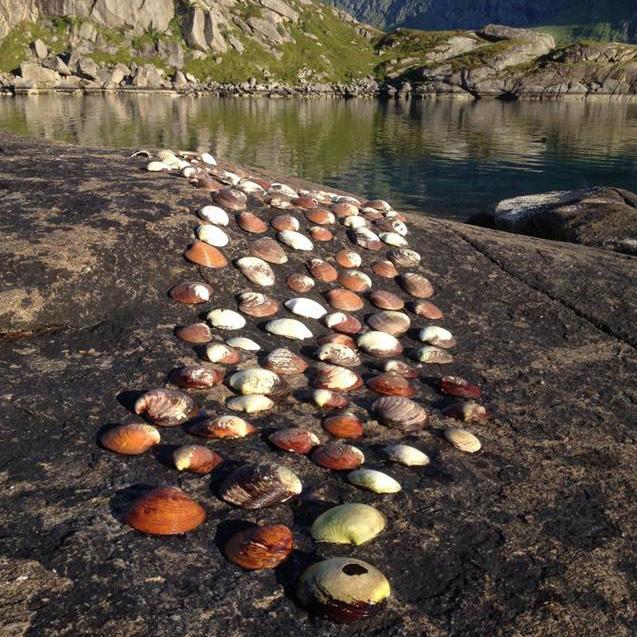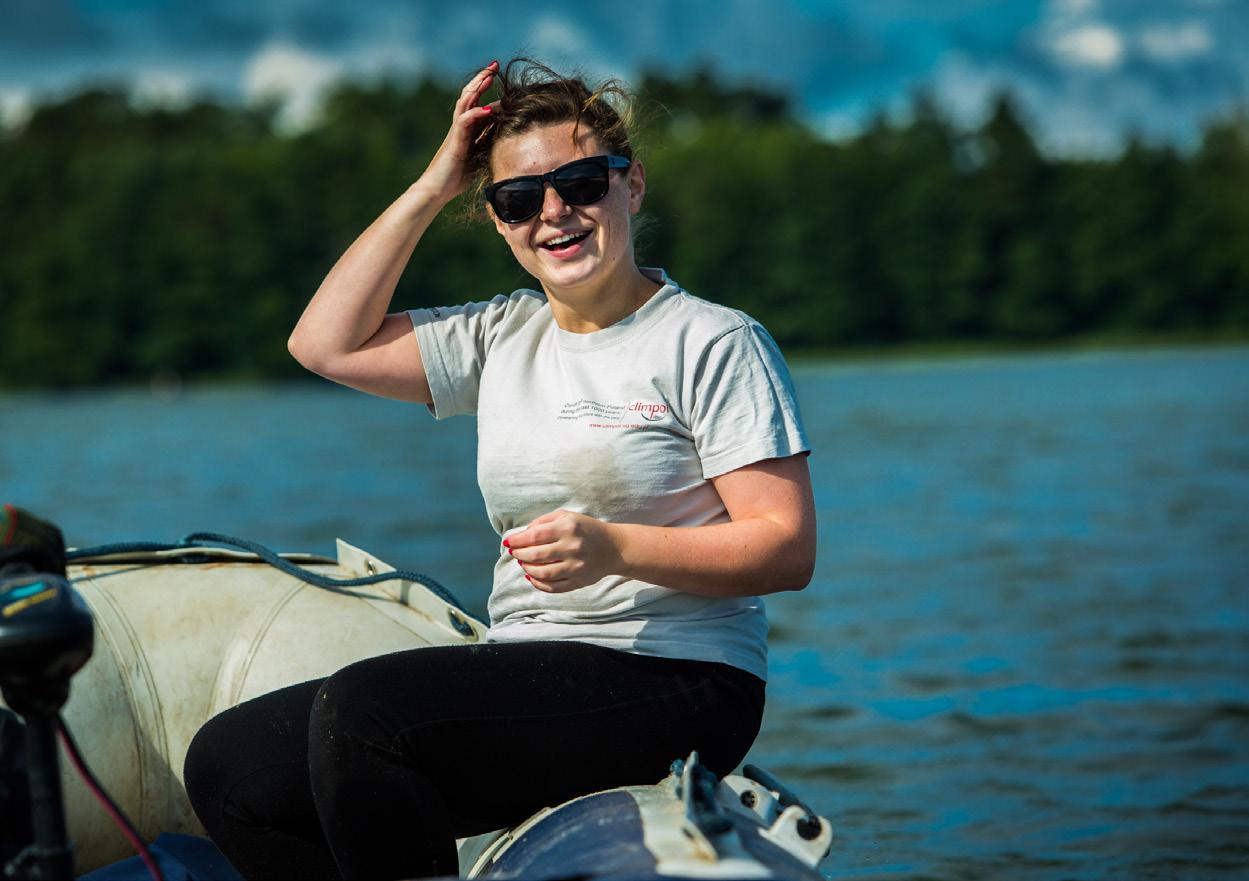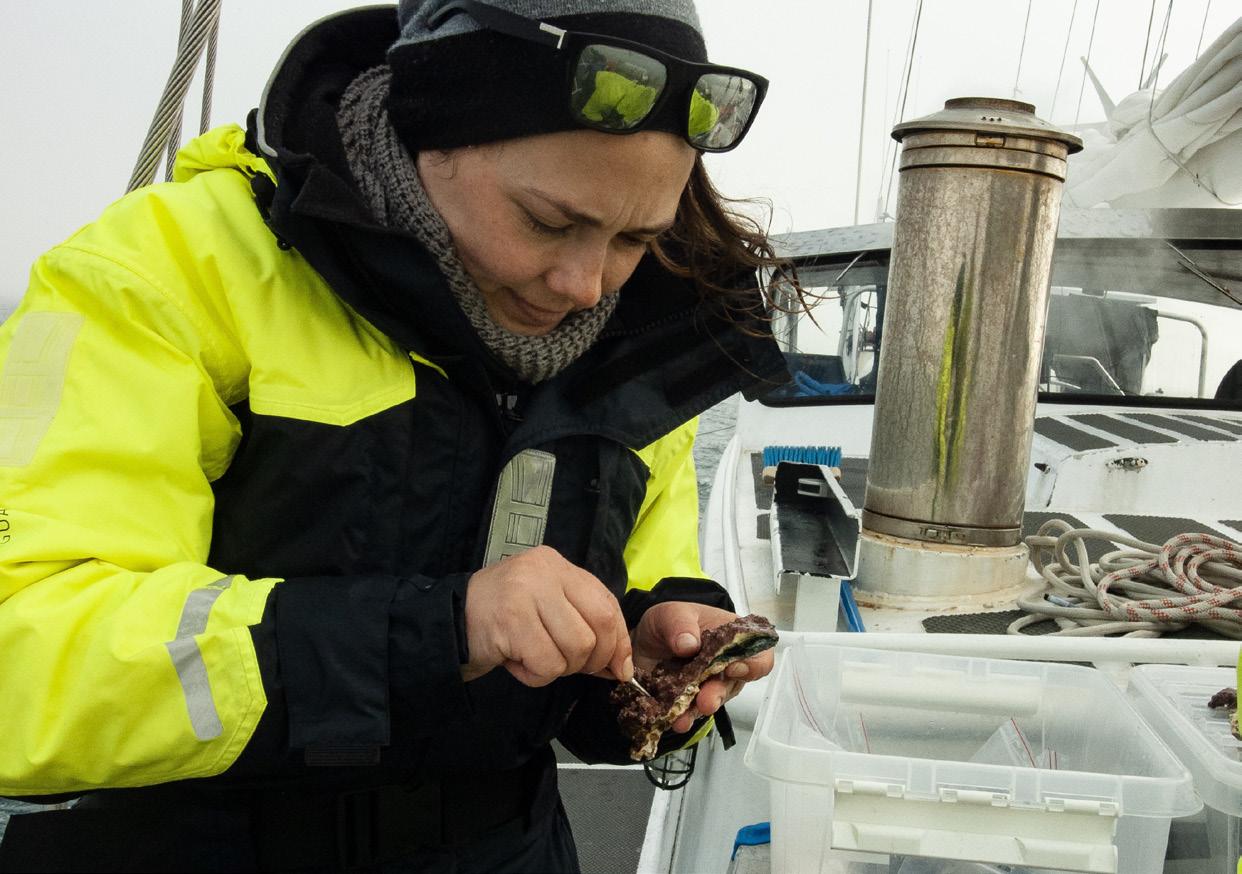
6 minute read
Young scientists speak about global change sciences
PAGES interviewed three members of the PAGES
Early-Career Network who have been studying different topics in paleoscience. Alicja Bonk is an assistant professor at the University of Gdańsk in
Advertisement
Poland; Stella Alexandroff is a research associate at the University of Exeter in the UK; and Tamara
Trofimova is a researcher at the NORCE Norwegian Research Centre and the Bjerknes Centre for
Climate Research in Norway. They gave us some insights about their research but also their motivation for choosing to study paleoscience and how this can help us prepare for the future.
Why should we study the Earth, ecosystems, and/or climate history?
past present
Future
Why did you decide to become a paleoresearcher?
How has your education prepared you for paleoresearch?
Alicja Bonk collecting samples from Lake Żabińskie (aka FINCH), northeastern Poland (photo courtesy of Marcin Zięba).
Alicja Bonk: paraphrasing T.H. Van Andel: "Today is the product of yesterday." There is no better way to express why we should study the Earth and its history.
By studying the past we can predict changes that are about to happen, estimate their range, and develop strategies for future generations. Stella Alexandroff: We can only understand the changes we are causing to the Earth system if we have a baseline – a problem needs context. What does the natural variability look like? How rapid are the current changes? How will the system react? We can answer these questions by looking into the past. Tamara Trofimova: We know only a fraction of what the world around us is really like, which is, by itself, a good reason to learn more! By studying the history of the Earth and life on it, we can better understand nature, how our actions can affect it, and be prepared for the future. Alicja: After my graduation i joined a research team which had different scientific interests from mine. it cost me years of filling gaps in my knowledge and i still spend a lot of time learning, because new discoveries await. i didn't expect that paleoresearch would become my career but now i can't imagine doing something else. Stella: i did not plan to do that from the beginning. i followed my interests, and the many small choices i made along the way led me to the field i am in now. i studied ecology, which, although we heard a lot about shifting baselines, did not really include paleoresearch. it was through my diploma thesis on fossil coral reefs that i eventually understood the importance of the paleo aspect, and that is how i got into studying past marine environments. i often feel unprepared for it, but with solid research skills and enthusiasm you can do just about anything.

Shell samples (ocean quahog, Arctica islandica) drying on the shore, Lofoten islands, northern Norway (photo by Tamara Trofimova).
Tamara: it is fascinating that we can study what the world was like thousands of years ago and learn how it has been changing through time! Much like detective work, we use small clues to reconstruct the big picture and the course of events. i became interested in paleoresearch when i learned how some organisms and their fossil remains can provide such clues and help us better understand past, present, and even future climate. i studied ecology and marine biology and later focused on paleoceanography. My education helps me to interpret paleorecords provided by the organisms i use in my research.

What is your research specialty? More generally, how is it useful?
Alicja: To talk about the dynamics of change, including abruptness and duration, a robust and accurate chronology (arranging events in time order) is needed.
My primary research specialty is constructing chronologies based on lake sediments, which are incredibly important archives tracking environmental and climate changes. Stella: My research field is called sclerochronology– i study past marine climate variability using the annual banding and geochemical signals in clam shells.
Natural archives of past marine climate are needed because instrumental records are very scarce and only cover the past few decades. The great thing about our techniques in particular is that the records we produce are very highly resolved (daily to annually), they are absolutely dated, and can go back several centuries or millennia. Thus, this is an incredibly powerful and precise tool that can further our knowledge and understanding of the history of marine environmental changes. Tamara: i study past marine climate and use clam shells and coralline red algae in my research. While growing, these organisms record ambient conditions in their carbonate skeletal structures (mollusks' shells and thalli of algae), just like weather stations. By analyzing a physical and chemical composition of these structures, we can "read" their records and "extract" environmental information on, for example, past ocean temperatures and salinity. These structures also have annual bands similar to tree rings, which we use as a calendar marking the beginning and the end of a year in the "skeletal records". Through these records, we can learn how ocean and climate were changing through time and what are the mechanisms controlling these changes.
Tamara Trofimova examines a sample of coralline algae during a research cruise off the coast of Svalbard (Photo credit: Raymond Olsen). Stella Alexandroff at Rothera, Antarctica, during a research cruise off the Antarctic Peninsula.

How do you think your work can change the world? Alicja: i don't think my work alone is powerful enough but i believe that joint effort of (paleo)researchers and society can influence the future of our planet.
There are examples of climate-environment-human interactions in the past which can be useful in tackling today's problems. Education and innovative approaches will change the world. Stella: i believe in community effort, and i see my work as one piece of the puzzle. A network of records across geographic regions and geological timescales is needed to improve our understanding of the environment. it takes a village – or rather a global community – of researchers from various backgrounds. Tamara: My research helps to fill the gaps in our knowledge of past climate, nature, and the processes within it. My work might not change the world but can change the way we see it.
From a personal point of view, what would you like to say to the younger generation about past, present, and future global changes?
Alicja: The Earth is a very dynamic and complex system and so are global changes. To reconstruct the past, understand the present and predict the future, networking, collaboration and engaging the younger generation is necessary. it is crucial to ask tough questions and look for the answers beyond a single discipline. Stella: it can be difficult not to feel world-weary with everything going on. The key is to seek out examples of positive progress and nuggets of hope – they are sometimes hard to find among a wealth of messages of doom, but they do exist. The climate movement is one of them. Tamara: There is much to learn from the past if we want to know what the future might be. Although our knowledge is limited, we know that the world around us is changing at an unprecedented rate. if we want to avoid dramatic consequences, we need to change the way we act towards nature.









